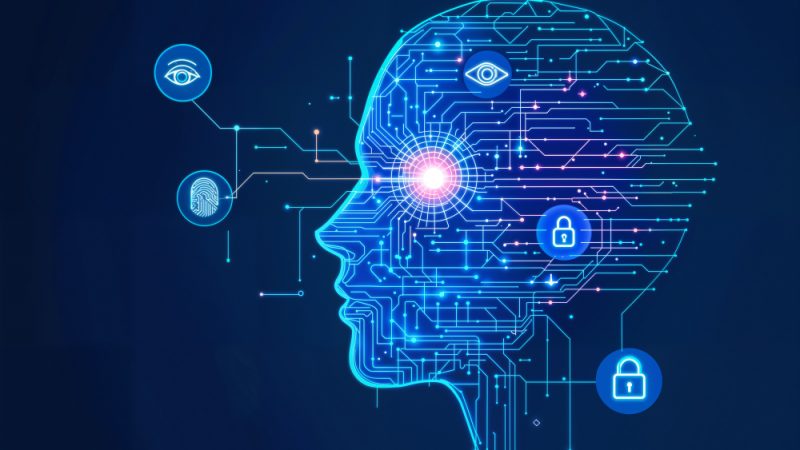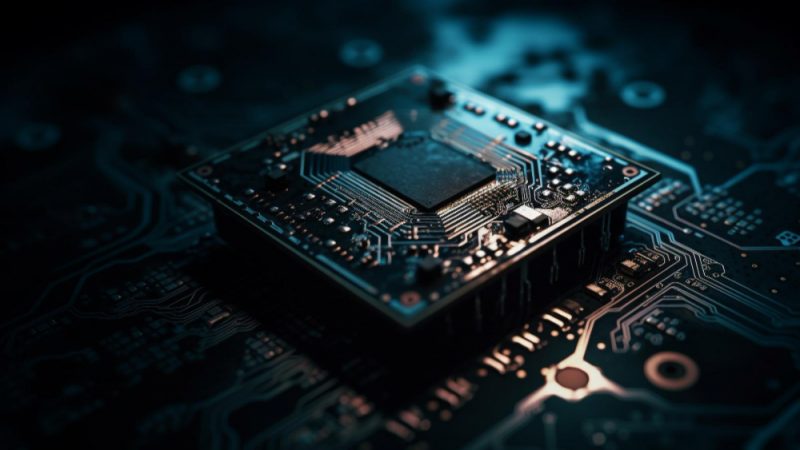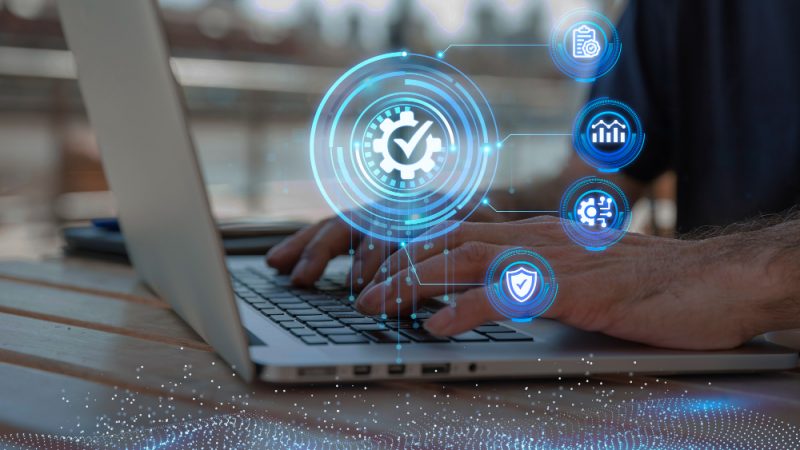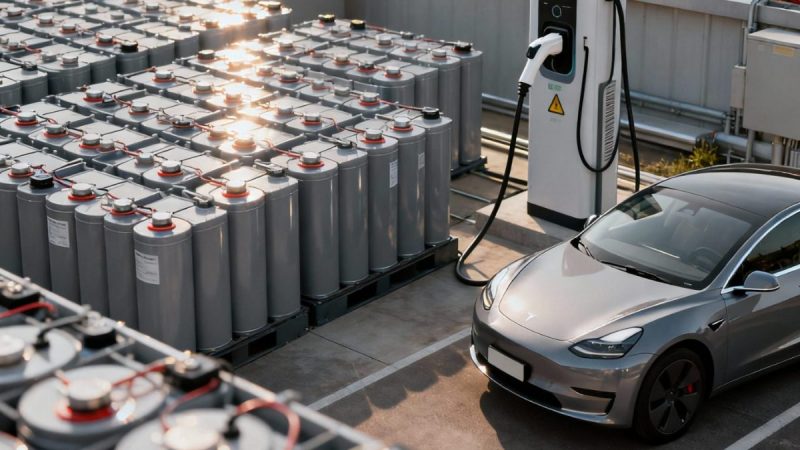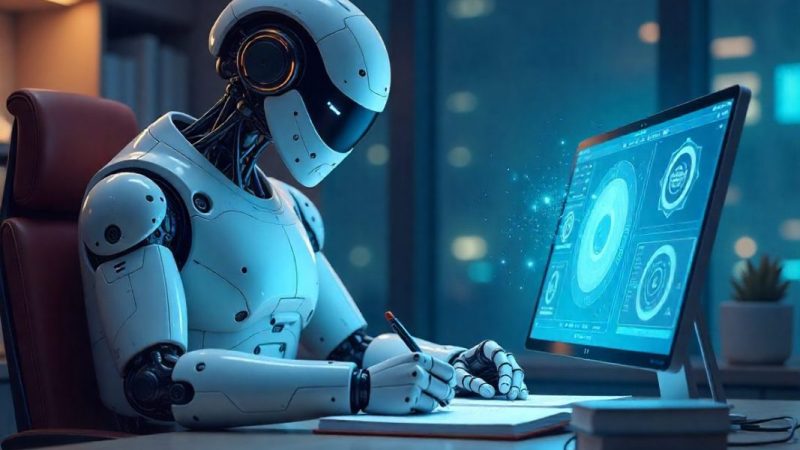The Fourth Industrial Revolution: What it Means and How to Respond?
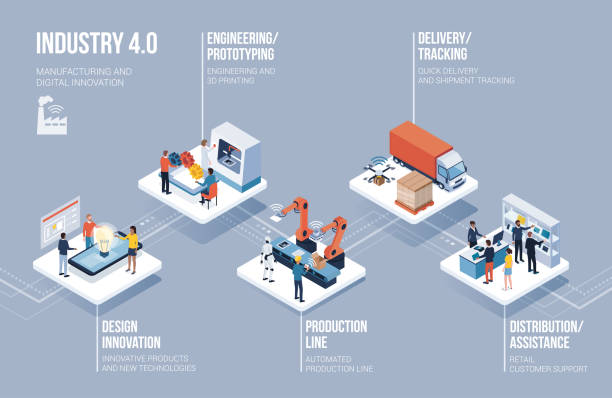
The term revolution denotes radical and abrupt change. Revolutions have occurred throughout history when new technologies and novel ways of perceiving the world trigger a profound change in social structures and economic systems.
A lot of interchangeable labels have been coined and used to describe the innovations of today’s new socioeconomic era, such as the digital age, the fourth industrial revolution, the Internet of Things or the industrial internet.
In particular, in recent years, the notion of the fourth industrial revolution has been proposed by the world economic forum to refer to the drastic and accelerating development of technologies and their impact on society at a larger perspective.
What is The Fourth Industrial Revolution?
The 4IR can be defined as the revolutionary change that occurs when IT proliferates in all industries, that is, the primary, secondary and tertiary industries. In other words, it is the result of the horizontal expansion of IT.
Therefore, the fourth industrial revolution features the creative connection between technology and the market in all industries based on IT.
In other words, the creative and open combination of technology and the market through open innovation or growth based on the open business model.
Technologies Driving Change
The fourth industrial revolution refers to the development and deployment of holistic smart systems that integrate technology. The driving force of the 4IR is the combination and integration of advanced intelligent and digital-based platforms and machines with dynamic nature distinguishing humans.
It represents a paradigm shift with a new wave of innovations characterized by the digitization of society, business and our lives. These innovations will increasingly transform how organizations do businesses, operate their productions, affect society and make their ecological footprint as well as drive change in how people live their lives.
Artificial Intelligence
Starting around 2009, the talks about Industry 4.0, industrial IoT and other related concepts started. Although, in retrospect, the third and second industrial revolutions largely just replaced human muscle and manual labor with computers and machines merely repeating pre-programmed behavior.
Until recently, even the most researched machines and computers did not make human-like decisions. However, the fourth industrial revolution increased the level of digitalization with advancements in technology like implementation of artificial intelligence in education sector.
Artificial Intelligence is predicted to change our lives in the next 10 years by being deeply embedded across industrial and other applications. AI in the fourth industrial revolution is beginning to live up to its promises of delivering real value necessitated by the availability of relevant data, computational ability and algorithms.
Virtual Reality and Augmented Reality
Virtual Reality and Augmented Reality serve as building blocks for innovation and development for the industries where humans are trying their best to achieve maximum accuracy and efficiency in production and related processes.
Industrial digitalization in AR and VR is a transformation towards the implementation of hyper-connected smart factories where it is possible to access and modify in real-time, the behavior of different elements that make up the system.
In industry 4.0, AR and VR technology is at the service of the industry to improve the productivity, safety, quality and efficiency of industrial processes. These are two essential technologies for the transition to industry 4.0 that allow industrial companies to embark on the path towards digitalization with process improvement, minimized downtime, saved costs and increased safety.
Blockchain
Blockchain has a vital role to play in the fourth industrial revolution and is expected to open new doors to new innovative models. The world economic forum reports that blockchain could account for 10% of global GDP by 2027. The business value-add of blockchain is expected to grow up to a staggering USD 176 billion by 2025, and to 3.1 billion by 2030.
Blockchain is disrupting all industry verticals, and those who still do not have it are analyzing its fundamental aspects and benefits within the scope and technical constraints.
One of the reasons behind Blockchains’ widespread use is the fusion of different technologies paving the way for a new Blockchain-based ecosystem that can open the door to enormous possibilities of innovation.
Moreover, there is no doubt that AI, big data and machine learning have given extreme power to digital systems and combining them with the Blockchain will increase cyber protection and authenticity in data where value exchange does matter, especially in the era of the fourth industrial revolution.
Internet of Things
Undoubtedly one of the things that the world will see more of in the coming years’ Internet of Things. One recent trend in the IoT world is the use of big data analysis on the data collected by a host of IoT devices. The biggest way that IoT is impacting the industry is by creating new opportunities for industries to collect data and accurately analyze it.
What IoT does is not a new way of bringing in data, but just a much wider scope of data. This data analysis and predictive analysis help in overcoming challenges and attaining the full potential of the IoT across industries and businesses.
Rightly made IoT technology has the potential to save lives as well as limit the carbon footprint that humans are leaving on the world. Amidst the 4IR, IoT technologies will help in the sustainable development of the resources that are already being emptied at an alarming rate.
Robotics
Industry 4.0 heralds an age of smart systems and digital integration led by the evolution of robotics and automation. In recent surveys, 57% of employers indicated an interest in boosting performance and productivity through robotic automation.
Although the initial cost of automated software or robots may be significant, the return on investment can be swift. The implementation and development of robotics will eliminate a significant portion of low-skilled manual jobs currently occupied by workers.
The fourth industrial revolution is a consequence of the digital transformation, a result of the fusion of technologies that is breaking down the limits between the digital, physical and biological spheres. Robots do not have the same need as humans; nor do companies need to abide by employment laws resulting in exponential growth in output and efficiency.
Challenges and Opportunities
The breadth and scale of the unfolding technological revolution ushers in economic, social and cultural changes of phenomenal proportions that are almost impossible to envisage. Here are the potential impacts of the fourth industrial revolution.
In all these areas, one of the biggest impacts resulting from a single force is empowerment.
Impact on Business
Technologies are striving to change the impossible and are transforming customers’ expectations. Across all industries, there is clear evidence that the technologies that underpin the Fourth industrial revolution are having a major impact on businesses.
Many industries are already creating entirely new ways of serving existing needs on the supply side and disrupting industry value chains significantly. On the demand side, major shifts are happening resulting in consumer engagement and growing transparency upon new patterns of consumer behavior. Businesses are adapting contemporary ways to design, market and deliver their services and products.
The existing industry structures are disrupted and are rendered with easy-to-use technologies, creating entirely new ways of consuming goods and services in the process.
This entire process helps in leading the sustainable use of resources promoting smart agricultural productions in order to deal with the job market that is increasingly segregated into low skill and low pay and high skill pay segments leading to an increase in social tensions.
Additionally, a big economic concern represents technological innovation leading to a supply-side miracle with long-term gains in efficiency and productivity.
Impact on Government
As the digital and physical world continue to converge, new technologies and platforms will increasingly enable citizens to engage with the government, coordinate their efforts and voice their opinions.
On the other hand, governments will gain new technological powers to increase their control over populations, based on pervasiveness and their ability to control digital infrastructure.
The fourth industrial revolution helps governments foster an open, flexible, knowledge and skill-based economy by promoting trade outside the traditional trading norms. It improves the effectiveness and efficiency of overall health and social care systems along with offering advancements in security sectors.
However, government agencies need to maintain social cohesion in an era of potentially major disruption, such as instability in the market and add relevant changes in wealth distribution.
As the march of technology begins to impact the mainstream world of work, governments will need to plan an approach to manage the impact of the transition to new technologies.
Impact on People
Eventually, the fourth industrial revolution will change not only what we do but also who we are. It will affect our recognition and the issues related to it such as notions of ownership, consumption patterns and a sense of privacy.
One may say that constant connection with our smartphones may deprive us of more important life assets of taking the time to pause, reflect and engage in meaningful conversations.
One of the biggest individual barriers and challenges is privacy. Instinctively, even though we understand it is essential, the sharing and tracking of information is yet another crucial part of new connectivity.
In the years ahead, debates about fundamental issues such as the impact on our inner lives of the loss of control over data will only intensify. The revolutions occurring in recent technologies are compelling us to redefine our ethical and moral boundaries by pushing back the current thresholds of human capabilities.
Walking towards the Future
These emerging technologies are not predetermined forces out of our control, nor are they simple tools with known consequences.
The exciting capabilities provided by artificial intelligence, distributed ledger systems, advanced materials, biotechnologies and cryptocurrencies are already transforming society and paving a bright future. There are a lot of innovations in store as the fourth industrial revolution unfolds.
Automating key tasks could eradicate tedious aspects of jobs and allow employees to focus on other meaningful tasks. Although, some worry that the fourth revolution could create a dystopian world where robots have taken our jobs and there’s a massive wealth disparity between those that own robotic automation and those who don’t.
All of us are equally responsible for guiding this evolution by the decisions we make as consumers, investors or citizens. The actions we take today and those we don’t will quickly become embedded in ever-more powerful technologies that surround us and will very soon become an integral part of us.
Conclusion
Industry 4.0 or the fourth industrial revolution is gaining a lot of attention particularly on its potential impact on humanity. There has never been a time of greater promise, or one of greater potential peril. It will change how human beings live, work and how the economies work as well as how we are governed.

